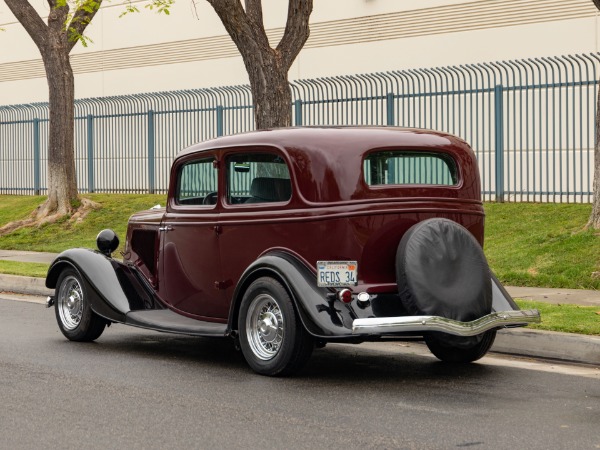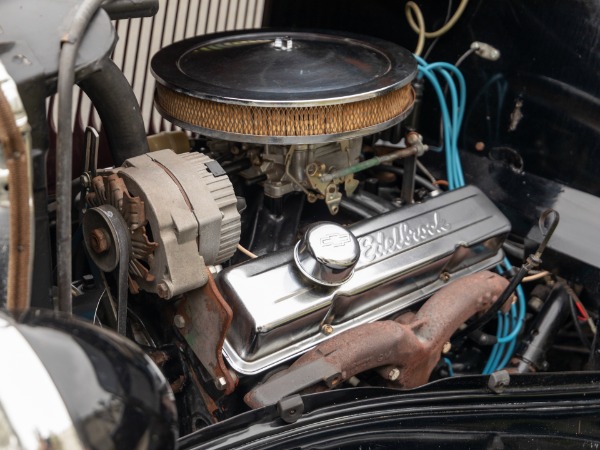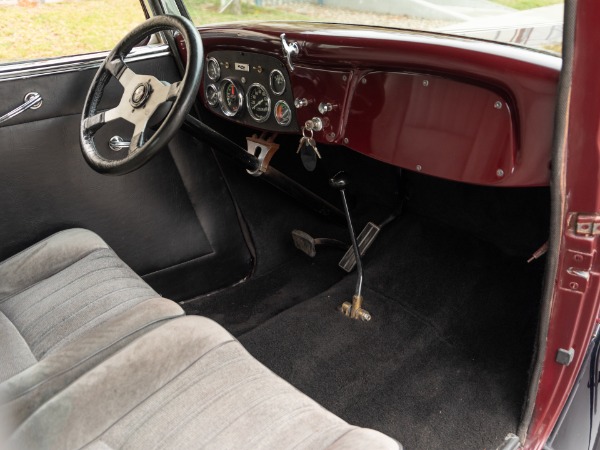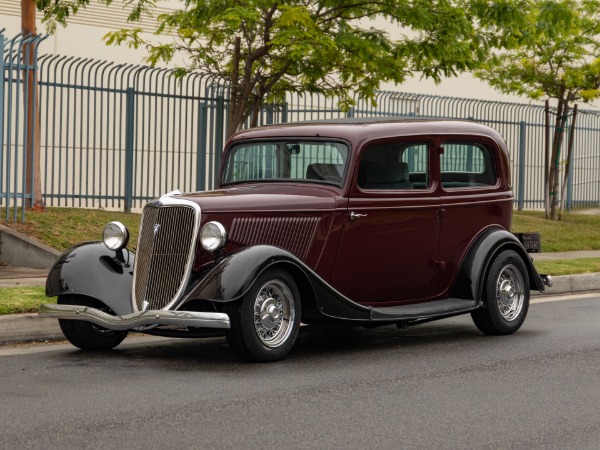The 1934 Ford, also known as the Ford Model 40, holds a prominent place in automotive history as a significant milestone that shaped the evolution of American automobiles. In this detailed and comprehensive history, we will explore the background, design, and the influential figures behind the iconic 1934 Ford.
During the early 1930s, the Great Depression had a profound impact on the United States, including the automobile industry. Ford Motor Company, facing declining sales and production, embarked on a bold redesign to reinvigorate the company and regain market share. This led to the creation of the 1934 Ford, a vehicle that would make a lasting impact.
The design and styling of the 1934 Ford set it apart from its predecessors. Available in various body styles such as sedans, convertible coupes, roadsters, and pickup trucks, the 1934 Ford featured a bold and distinctive look. It incorporated streamlined features that captured the spirit of modernity, including a more rounded body shape and integrated headlights. These design choices gave the car a sleek and aesthetically pleasing appearance.
At the forefront of the design process was Bob Gregorie, a highly influential automotive designer. Born in Gary, Indiana, Gregorie developed a passion for automobiles at an early age. After graduating from the Art Institute of Chicago in 1931, he joined the Briggs Manufacturing Company, where his talents caught the attention of Edsel Ford.
In 1932, Edsel Ford hired Gregorie as a designer for Ford Motor Company, beginning a fruitful collaboration. Gregorie’s ability to translate Edsel Ford’s design vision into practical and appealing automobile designs quickly garnered recognition. His first major project at Ford was the redesign of the Model 40, which became the 1934 Ford.
Working closely with Edsel Ford, Gregorie infused the 1934 Ford with innovative and streamlined features that set it apart. He played a pivotal role in refining the car’s overall shape, proportions, and details, resulting in a vehicle with a sleek and modern aesthetic. Under Gregorie’s guidance, the 1934 Ford boasted flowing lines, integrated headlights, a streamlined grille, and harmonious body contours, all of which enhanced both its appearance and performance.
Gregorie’s influence extended beyond the 1934 Ford. He continued to work for Ford Motor Company, leaving an indelible mark on automotive design. Notable projects include the Lincoln-Zephyr, the Lincoln Continental, and the Ford Thunderbird. Gregorie’s designs were celebrated for their elegance, sophistication, and timeless beauty.

Chassis and Suspension: One of the key advancements in the 1934 Ford was the introduction of a new and improved chassis design. The chassis was stronger and more rigid than previous models, allowing for better handling and improved durability. It featured a longer wheelbase and a wider track, which contributed to enhanced stability and road-holding capabilities. Additionally, the suspension system was updated, incorporating a transverse leaf spring setup in the front and rear, providing a more comfortable ride for passengers.
Engine and Performance: The 1934 Ford offered a range of engine options to suit different customer preferences. The standard engine was a 221 cubic inch (3.6-liter) flathead V8, which produced 85 horsepower. This engine was a significant improvement over previous models, delivering more power and better acceleration. Ford also offered an optional 221 cubic inch V8 with an improved “B” camshaft, known as the “85B” engine, which generated 90 horsepower. These engines were renowned for their reliability and efficiency, making the 1934 Ford a popular choice among consumers.
Technological Innovations: Ford incorporated several technological innovations into the 1934 model, showcasing the company’s commitment to progress. One notable advancement was the adoption of hydraulic brakes on all four wheels, replacing the outdated mechanical braking systems of earlier models. This improvement significantly enhanced braking performance and safety. Additionally, Ford introduced a new electrical system, featuring a 6-volt battery and generator, ensuring reliable operation of lights, instruments, and other electrical components.

‘This is a captivating example of a customized 1934 Ford 2 Door Sedan street hot rod. This particular vehicle retains the original steel body and features a powerful Chevy 350 V8 engine paired with an automatic transmission.
Despite being over 87 years old, this Ford has undergone a modern street rod conversion while preserving its timeless external appearance and characteristics. It is a rare all-steel California-titled 1934 Ford, which still requires some minor finishing touches and attention to reach its full potential. Although it runs and drives well, it may benefit from carburetor adjustments and a tune-up, including the installation of electronic ignition.
Overall, this is a remarkable and unique 1934 Ford 2 Door Sedan custom street rod. It boasts the classic hot rod aesthetics and stance, complemented by modern-day custom upgrades and technological advancements. Its “Henry Ford steel” construction adds to its rarity and authenticity, making it an exceptional find for enthusiasts and collectors alike.’
Success and Legacy: The 1934 Ford proved to be a tremendous success for Ford Motor Company. Despite the challenging economic climate, the redesigned model captured the attention of consumers and rejuvenated the company’s sales. The 1934 Ford’s popularity was fueled by its attractive styling, improved performance, and competitive pricing. The model became a symbol of the American spirit, representing the optimism and resilience of the nation during the Great Depression.
Moreover, the 1934 Ford played a pivotal role in the development of hot rodding and custom car culture. Its sleek lines and powerful V8 engine made it a favorite among car enthusiasts, who sought to modify and personalize the vehicle. The 1934 Ford’s popularity in hot rodding circles continued for decades, cementing its status as an iconic car in American automotive history.

In conclusion, the 1934 Ford was a transformative model that left an indelible mark on the automotive industry. Its innovative design, improved performance, and technological advancements contributed to its success during a challenging period in American history. The 1934 Ford’s enduring legacy is a testament to its timeless appeal and its significant influence on subsequent generations of automobiles.

